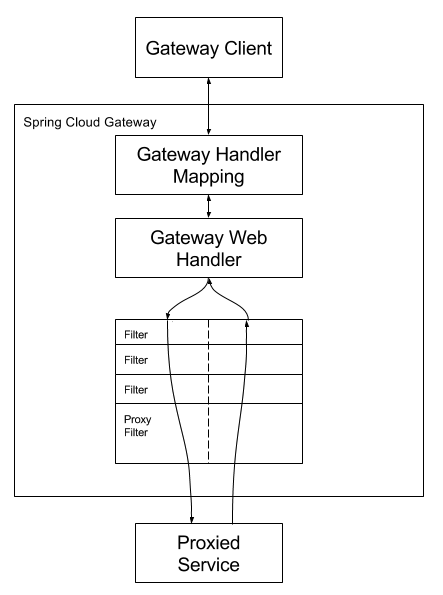抓主线

启动如何注入 DispatcherHandler ?
0. ReactorHttpHandlerAdapter
此处长话短说,在 Spring Webflux 启动的过程调用链如下:
<init>:50, ReactorHttpHandlerAdapter (org.springframework.http.server.reactive)
getWebServer:71, NettyReactiveWebServerFactory (org.springframework.boot.web.embedded.netty)
<init>:49, WebServerManager (org.springframework.boot.web.reactive.context)
createWebServer:90, ReactiveWebServerApplicationContext (org.springframework.boot.web.reactive.context)
onRefresh:77, ReactiveWebServerApplicationContext (org.springframework.boot.web.reactive.context)
refresh:545, AbstractApplicationContext (org.springframework.context.support)
refresh:62, ReactiveWebServerApplicationContext (org.springframework.boot.web.reactive.context)
refresh:758, SpringApplication (org.springframework.boot)
refresh:750, SpringApplication (org.springframework.boot)
refreshContext:397, SpringApplication (org.springframework.boot)
run:315, SpringApplication (org.springframework.boot)
run:1237, SpringApplication (org.springframework.boot)
run:1226, SpringApplication (org.springframework.boot)
main:34, AwesomeGatewayApplication (com.holddie.gateway)
执行 ReactorHttpHandlerAdapter 的构造方法,注意此时 httpHandler 为空。
public ReactorHttpHandlerAdapter(HttpHandler httpHandler) {
Assert.notNull(httpHandler, "HttpHandler must not be null");
this.httpHandler = httpHandler;
}
new WebServerManager.DelayedInitializationHttpHandler(handlerSupplier, lazyInit);
1. WebFluxConfigurationSupport
在这个类中声明了 DispatcherHandler 实例 Bean
@Bean
public DispatcherHandler webHandler() {
return new DispatcherHandler();
}
2. DispatcherHandler
由于 DispatcherHandler 类本身实现了 ApplicationContextAware 接口,因此会执行 DispatcherHandler(ApplicationContext applicationContext) 方法,然后执行 initStrategies 方法。
@Override
public void setApplicationContext(ApplicationContext applicationContext) {
initStrategies(applicationContext);
}
protected void initStrategies(ApplicationContext context) {
Map<String, HandlerMapping> mappingBeans = BeanFactoryUtils.beansOfTypeIncludingAncestors(
context, HandlerMapping.class, true, false);
ArrayList<HandlerMapping> mappings = new ArrayList<>(mappingBeans.values());
AnnotationAwareOrderComparator.sort(mappings);
this.handlerMappings = Collections.unmodifiableList(mappings);
Map<String, HandlerAdapter> adapterBeans = BeanFactoryUtils.beansOfTypeIncludingAncestors(
context, HandlerAdapter.class, true, false);
this.handlerAdapters = new ArrayList<>(adapterBeans.values());
AnnotationAwareOrderComparator.sort(this.handlerAdapters);
Map<String, HandlerResultHandler> beans = BeanFactoryUtils.beansOfTypeIncludingAncestors(
context, HandlerResultHandler.class, true, false);
this.resultHandlers = new ArrayList<>(beans.values());
AnnotationAwareOrderComparator.sort(this.resultHandlers);
}
这里一笔带过,我们可以看到有对应的 handleMapping、handleAdapter、resultHandlers 应该都很熟悉。
3. HttpHandlerAutoConfiguration
首先注意观察这个 configuration 的注解,声明只有在响应式下才会加载。
@Configuration(
proxyBeanMethods = false
)
@ConditionalOnClass({DispatcherHandler.class, HttpHandler.class})
@ConditionalOnWebApplication(
type = Type.REACTIVE
)
@ConditionalOnMissingBean({HttpHandler.class})
@AutoConfigureAfter({WebFluxAutoConfiguration.class})
@AutoConfigureOrder(-2147483638)
public class HttpHandlerAutoConfiguration {
.....
@Bean
public HttpHandler httpHandler(ObjectProvider<WebFluxProperties> propsProvider) {
// 这里使用构造器模式构造 httpHandler,注意 applicationContext 方法 和 build 方法.
HttpHandler httpHandler = WebHttpHandlerBuilder.applicationContext(this.applicationContext).build();
WebFluxProperties properties = (WebFluxProperties)propsProvider.getIfAvailable();
if (properties != null && StringUtils.hasText(properties.getBasePath())) {
Map<String, HttpHandler> handlersMap = Collections.singletonMap(properties.getBasePath(), httpHandler);
return new ContextPathCompositeHandler(handlersMap);
} else {
return httpHandler;
}
}
.....
}
4. WebHttpHandlerBuilder
public static WebHttpHandlerBuilder applicationContext(ApplicationContext context) {
WebHttpHandlerBuilder builder = new WebHttpHandlerBuilder(
context.getBean(WEB_HANDLER_BEAN_NAME, WebHandler.class), context);
.....
}
private WebHttpHandlerBuilder(WebHandler webHandler, @Nullable ApplicationContext applicationContext) {
Assert.notNull(webHandler, "WebHandler must not be null");
this.webHandler = webHandler;
this.applicationContext = applicationContext;
}
此处的context.getBean(WEB_HANDLER_BEAN_NAME, WebHandler.class)获取的就是前边声明的 DispatcherHandler Bean,然后赋值给this.webHandler为build方法使用方便。
public HttpHandler build() {
WebHandler decorated = new FilteringWebHandler(this.webHandler, this.filters);
decorated = new ExceptionHandlingWebHandler(decorated, this.exceptionHandlers);
HttpWebHandlerAdapter adapted = new HttpWebHandlerAdapter(decorated);
......
}
执行 build 方法,这里使用装饰器模式,将不同类型的WebHandler一层层包装起来。此处需要额外留意一下FilteringWebHandler,这个为之后的执行DispatcherHandler的handle方法铺垫。
如何调用到 DispatcherHandler 的 handle 方法?
FilteringWebHandler
按照上述流程加载完毕之后,当有一个请求打过来之后,使用 ReactorHttpHandlerAdapter 处理请求,请求堆栈如下:
filter:119, DefaultWebFilterChain (org.springframework.web.server.handler)
handle:59, FilteringWebHandler (org.springframework.web.server.handler)
handle:56, WebHandlerDecorator (org.springframework.web.server.handler)
handle:70, ExceptionHandlingWebHandler (org.springframework.web.server.handler)
handle:235, HttpWebHandlerAdapter (org.springframework.web.server.adapter)
handle:97, WebServerManager$DelayedInitializationHttpHandler (org.springframework.boot.web.reactive.context)
apply:65, ReactorHttpHandlerAdapter (org.springframework.http.server.reactive)
apply:40, ReactorHttpHandlerAdapter (org.springframework.http.server.reactive)
onStateChange:64, HttpServerHandle (reactor.netty.http.server)
onStateChange:514, ReactorNetty$CompositeConnectionObserver (reactor.netty)
onStateChange:267, TcpServerBind$ChildObserver (reactor.netty.tcp)
onInboundNext:462, HttpServerOperations (reactor.netty.http.server)
channelRead:96, ChannelOperationsHandler (reactor.netty.channel)
invokeChannelRead:379, AbstractChannelHandlerContext (io.netty.channel)
invokeChannelRead:365, AbstractChannelHandlerContext (io.netty.channel)
fireChannelRead:357, AbstractChannelHandlerContext (io.netty.channel)
channelRead:170, HttpTrafficHandler (reactor.netty.http.server)
invokeChannelRead:379, AbstractChannelHandlerContext (io.netty.channel)
invokeChannelRead:365, AbstractChannelHandlerContext (io.netty.channel)
fireChannelRead:357, AbstractChannelHandlerContext (io.netty.channel)
fireChannelRead:436, CombinedChannelDuplexHandler$DelegatingChannelHandlerContext (io.netty.channel)
fireChannelRead:324, ByteToMessageDecoder (io.netty.handler.codec)
channelRead:296, ByteToMessageDecoder (io.netty.handler.codec)
channelRead:251, CombinedChannelDuplexHandler (io.netty.channel)
invokeChannelRead:379, AbstractChannelHandlerContext (io.netty.channel)
invokeChannelRead:365, AbstractChannelHandlerContext (io.netty.channel)
fireChannelRead:357, AbstractChannelHandlerContext (io.netty.channel)
channelRead:1410, DefaultChannelPipeline$HeadContext (io.netty.channel)
invokeChannelRead:379, AbstractChannelHandlerContext (io.netty.channel)
invokeChannelRead:365, AbstractChannelHandlerContext (io.netty.channel)
fireChannelRead:919, DefaultChannelPipeline (io.netty.channel)
read:163, AbstractNioByteChannel$NioByteUnsafe (io.netty.channel.nio)
processSelectedKey:714, NioEventLoop (io.netty.channel.nio)
processSelectedKeysOptimized:650, NioEventLoop (io.netty.channel.nio)
processSelectedKeys:576, NioEventLoop (io.netty.channel.nio)
run:493, NioEventLoop (io.netty.channel.nio)
run:989, SingleThreadEventExecutor$4 (io.netty.util.concurrent)
run:74, ThreadExecutorMap$2 (io.netty.util.internal)
run:30, FastThreadLocalRunnable (io.netty.util.concurrent)
run:748, Thread (java.lang)
对应FilteringWebHandler代码上
public Mono<Void> filter(ServerWebExchange exchange) {
return Mono.defer(() ->
this.currentFilter != null && this.chain != null ?
invokeFilter(this.currentFilter, this.chain, exchange) :
this.handler.handle(exchange));
}
此处的 this.handler.handle(exchange) 方法中的 handler 就是最开始在 build 方法里面装饰器模式包装的 DispatcherHandler ,之后就会调用 DispatcherHandler 的 handle 方法。